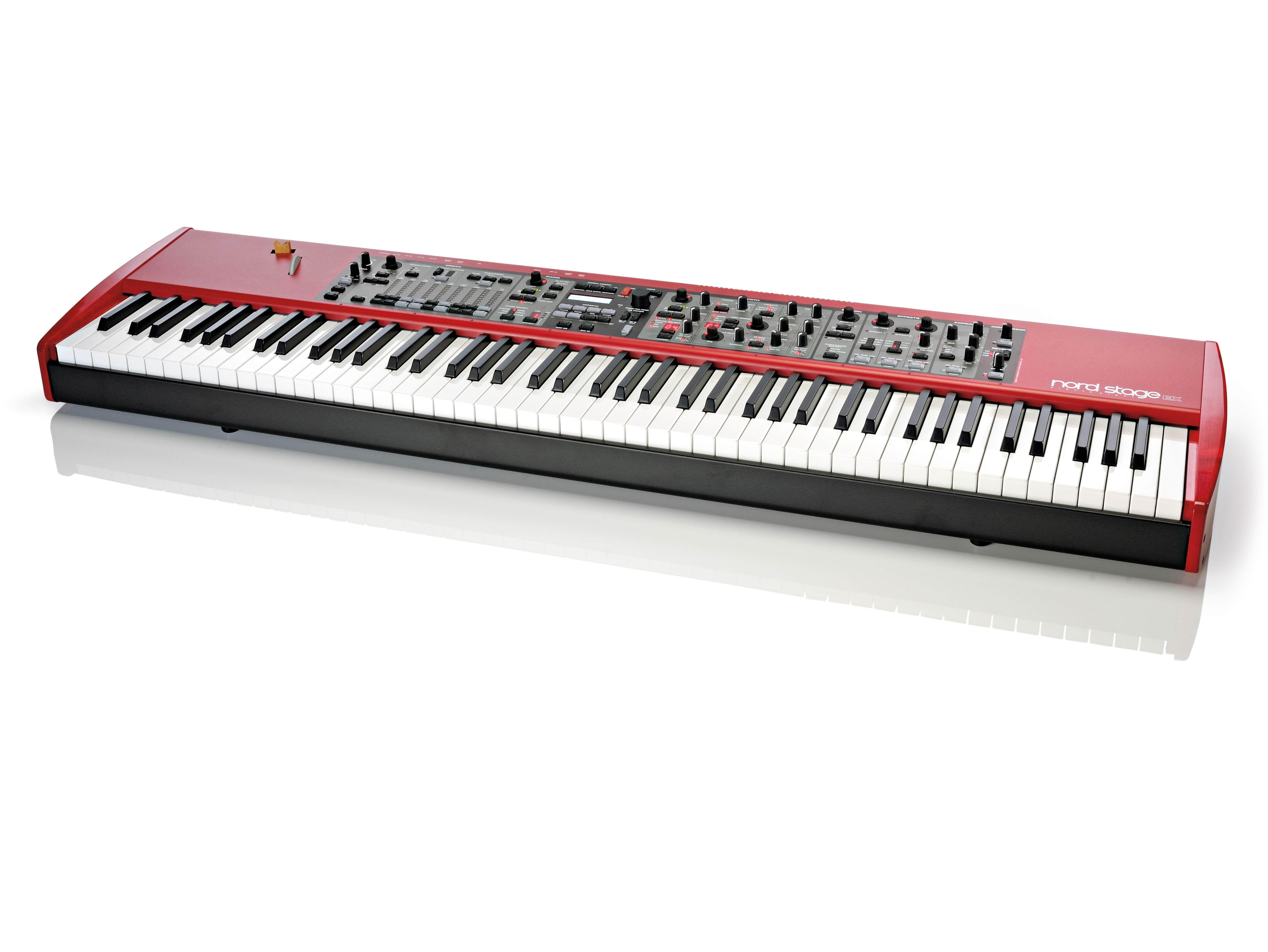MusicRadar Verdict
The EX is a subtle upgrade but the Nord Stage remains a great workhorse and its sounds are still some of the best.
Pros
- +
Little or no menu diving required for most functions – grab a dial and play. Authentic-sounding sampled emulations of organs, pianos and electric keys and a decent synth. Three different sizes available, all with very playable actions.
Cons
- -
Not a massive update. New colour scheme is harder on the eyes.
MusicRadar's got your back
Straight out of the box, the EX looks very similar to the standard Nord Stage. The main noticeable difference is that instead of the original Stage's multi-coloured front panel livery, the EX's is an altogether more grey and black affair.
Unfortunately, in practice, it's actually much harder on the eyes, as each formerly distinct section of the Nord's front panel now blends into one - a nightmare in dark lighting.
Other cosmetic changes include a new rear 'Stage' logo, a smaller front panel 'Nord Stage' logo and some new inclusions in the piano section. The first is the addition of a 'cemb' option (labelled in addition to Clavinet on the Clavinet button).
This currently accesses the two new Italian harpsichord sounds, which sound incredibly good, though we're still not sure about their usefulness.
The second change allows the Clavinet soft EQ option to double as a mono piano mode switch. Many Stage owners complained of summing issues when playing a stereo piano sample through one output, so the new button collapses the stereo image down to mono with no noticeable phasing problems.
To sum up, then, and to avoid any confusion, the only major internal difference between the current Stage and the EX is the added memory (an extra 128MB so more sounds can be stored onboard) and this mono piano mode. All other changes are purely cosmetic, including the newly-added front panel labelling for the rear-panel sockets, which should really have been there from day one.
Different versions
There are still three models in the series: the 88-note weighted model (tested here); the 76-note weighted model and finally the 76-note Compact (which uses semi-weighted waterfall keys and comes in an even more compact and super-giggable form factor).
Want all the hottest music and gear news, reviews, deals, features and more, direct to your inbox? Sign up here.
We feel the compact strikes the best balance - it's cheaper and lighter and we just can't get our head around playing Clavs and organs on a weighted board.
The Compact's keys are great, even for controlled and dynamic piano/electric piano playing. This is not to say the weighted action versions aren't decent, though - they're among the nicest, most realistic and non-fatiguing hammer actions available.
Either way, it's a compromise - you'll either end up playing organs, Clavs and synths with a weighted action, or electric pianos and pianos on a semi-weighted organ type board. We prefer the latter.
One of our favourite things about the Stage is its clever split and layer functionality. You can have a synth bass, a Rhodes and a Clav, with independent effects, accessed from the Stage's keyboard and then, via a MIDI keyboard, have an organ with a synth lead/Rhodes at the top. And all this with no menu diving using just the dedicated zone buttons and split lights.
Sound-wise, the Stage is perhaps still the best-sounding organ and piano/electric piano keyboard out there.
The electric pianos are dynamic and authentic to the original Rhodes and Wurlitzer models they are sampled from; the pianos are very realistic (the new Studio Grand mk2 Yamaha is particularly impressive and very playable); the synth has a slightly compromised interface (no dedicated envelope controls) but still sounds as good as a Nord Lead; and the effects are worthy of being packaged in their own standalone unit.
Summary
The Stage is still one of the best gigging keyboards out there. It's lightweight enough (even the 88 weighs only 41lbs), durable, reliable and sounds great. However, we wish Clavia could have added the user sample upload from the Wave and the Mellotron soundset as well in this upgrade. This would make this instrument truly complete and enable it to really compete with the likes of the Yamaha Motif and Korg M3.
Make no mistake, though - the Stage is still hard to beat. The new sounds are great and the extra sample memory is a bonus, but this upgrade could have been so much more comprehensive and exciting.
Let's hope Clavia chooses to bring out a Nord Stage 2 soon, with the features that Stage owners have wanted for so long. That said, the excellent EX is still a professional-grade instrument.
Take a listen to some of the Nord Stage EX 88's sounds:
Future Music is the number one magazine for today's producers. Packed with technique and technology we'll help you make great new music. All-access artist interviews, in-depth gear reviews, essential production tutorials and much more. Every marvellous monthly edition features reliable reviews of the latest and greatest hardware and software technology and techniques, unparalleled advice, in-depth interviews, sensational free samples and so much more to improve the experience and outcome of your music-making.

